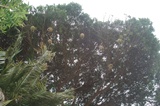Weaver news
|
Maria Prager completed her PhD in animal ecology, entitled "Phylogeny and Signal Diversity in Widowbirds and Bishops (Euplectes spp.)", at the University of Gothenburg, Göteborg, Sweden. Her thesis contains an overview and five papers (four published, one provisionally accepted). Maria defended her thesis on 12 March 2010. Maria found the genus Euplectes to be monophyletic. There was a distinction between the 'true' widowbirds (long tails, small colour patches) and bishops (short tails, large colour patches). However, the Red-collared Widowbird E. ardens was an exception as it belongs to the bishops rather than to the widowbirds. Also the Yellow Bishop E. capensis is actually a widowbird, as reflected in its previous name 'Yellow-rumped Widow'. The ancestral species probably had short tails and yellow plumage patches, and some species evolved long tails and redder colours (the red hues being gained via different mechanisms in different species). The Southern Red Bishop E. orix is able to manufacture red pigments from yellow precursors in its seed diet, while the Yellow-crowned Bishop E. afer is not able to do this. Maria's supervisor is Prof. Staffan Andersson who's long-term project is to study the behavioural ecology, physiological mechanisms and evolutionary diversification of carotenoid pigmentation in African widowbirds and bishops (Euplectes spp.) and other weaverbirds (Ploceinae). To allow phylogenetic comparative studies of social and ecological selection pressures and constraints on colour evolution, a molecular phylogeny of the studied taxa is being estimated from mitochondrial and nuclear genes. |











